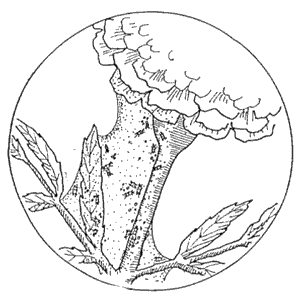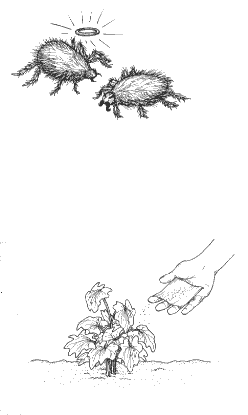 |
Mites are not true insects, but are closely related to spiders. Adult two-spotted spider mites are barely visible at about 1/50 inch long. Under a magnifying glass their yellowish or greenish oval bodies with 2 distinctive dark spots on the back are clearly visible. They have four pairs of legs and piercing-sucking mouthparts which they use to suck fluid from plant cell tissues. Mites spin webs from special glands in their heads and these webs are usually more visible than the mites themselves.
Their Growth Stages
Adult mites overwinter everywhere - on tree and shrub bark, on plants in the garden, in plant debris above and below the surface of the soil. They emerge in late spring. Hibernating female red spider mites can survive hard frost and temperatures as low as 14° F. They thrive in the dry air typical of cold weather. Mites complete their life cycle in about 2 weeks, so they are a problem outdoors almost anytime during the growing season and indoors on houseplants all year long.
Good Mites and Bad Mites
 |
In fact you can actually buy predatory mites from companies selling beneficial insects such as lady bugs and green lacewings. These minute good guys come attached somehow to a small piece of paper that you simply place in your garden in the area where you have a pest mite problem, and the predatory mites will move off the paper and go after the bad guys. This technique is probably not as practical for outside gardens as it is for a mite problem in a greenhouse, where the space is enclosed.

